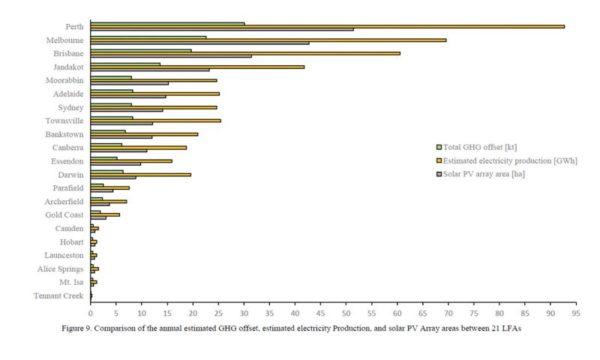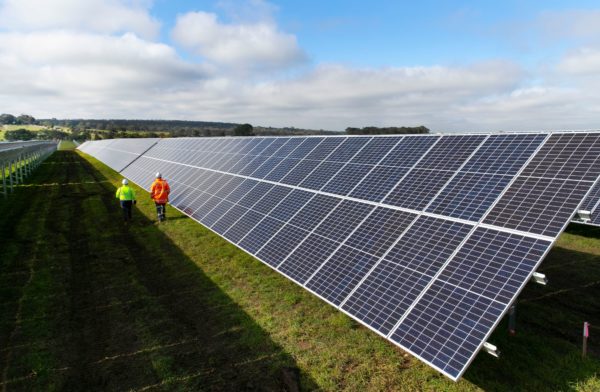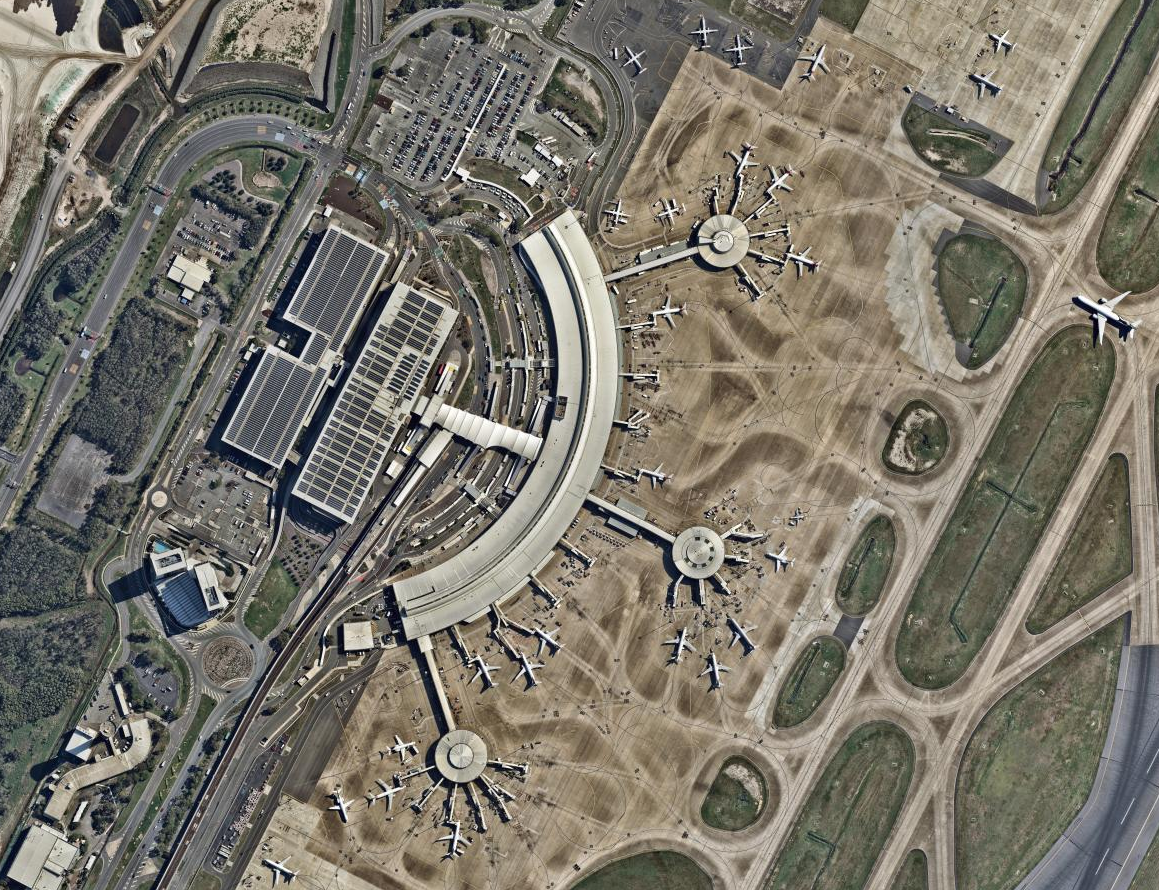A new study by RMIT University researchers questions whether the support offered by Australian governments for small-scale residential solar PV systems has distracted from the potential for large-scale installations on commercial buildings, specifically airports.
The paper, just published in the Journal of Building Engineering, compares the generating capacity of 21 Leased Federal Airports (LFAs) around Australia with the generating capacity of 17,000 installed residential solar rooftop PV panels in the City of Greater of Bendigo.
It found that solar panels installed on suitable roof space at Melbourne Airport alone would outperform Bendigo’s annual solar electricity production by almost 12 GWh a year; and that the combined output of the Commonwealth Government-administered airports would generate 10 times more than Bendigo’s residential fleet.
Geospatial scientist and researcher on the study, Dr Chayn Sun, said the team’s findings highlighted the necessity for energy policies to include plans for installing solar panels at the airport properties.
“We can’t rely on small residential solar to get us to a zero-emission economy”, but large installations on buildings such as airports “would get us a lot closer”, she said.
The current solar runway to airport emissions reduction
Of course some airports have already landed on solar as a means to reduce energy costs and emissions: Brisbane Airport Corporation (BAC), for example, contracted Epho (recently acquired by AGL) to install 6 MW of solar across a large portion of its rooftops back in 2018; it also has plans to install a further 5 MWs by 2025.
BAC reports that in the financial year to end of June 2020 its solar arrays generated 9.72 GWh of renewable energy, which represents around 18% of the facility’s annual energy consumption.
RMIT’s Investigating potential rooftop solar energy generated by Leased Federal Airports in Australia: Framework and implications study estimates the solar capacity of Brisbane airport at around 60 GWh per annum, so its potential remains greatly under-exploited.

Adelaide Airport sports a 1.17 MW solar-covered car park, installed by Solgen Energy Group in 2016, which completely provides for the energy needs of the short-term parking facility, and brought the total generation of Adelaide Airport rooftop solar to 1.28 MW.
RMIT shows that the aviation gateway to South Australia is capable of generating around 25 GWh of solar energy each year.
“Based on our solar radiation analysis, we know airports with decent solar systems could not only be self-sufficient, but would generate enough electricity to send excess back to the grid,” said Sun.
Mapping and methodology
In the first phase of the study, lead author Athenee Teofilo, a Master of Geospatial Science student, mapped the buildings at each of the 21 LFAs, excluding unsuitable structures such as domed and blister-type hangar roofs — and identified 2.61 square kilometres of useable space.
Researchers then used a Geographic Information System to determine the optimum tilt angle for solar arrays at each site, to maximise theoretical yield, before calculating that output.
Perth Airport topped the chart, with the estimated potential to use its rooftops to generate almost 95 GWh of clean electricity each year — almost twice the solar output of Greater Bendigo, and the equivalent of estimated production from Adelaide, Sydney, Moorabbin and Townsville airports combined.
At LFAs such as sun-seared Alice Springs and Tennant Creek, where the buildings themselves aren’t suited to solar installation, the study suggests installing ground-mounted solar, a strategy which has already been deployed to some extent at these airports and beyond.
In 2016, Darwin International Airport installed 4 MW of ground-mounted solar across six unused hectares of land on site, and a further 1.6 MW across various rooftops, and is poised to install a further 4 MW across other buildings at the site occupied by Bunnings the Cold Store Facility, Osgood South Business Park, the airport terminal itself and its carparks.
Melbourne Airport, aka Tullamarine, went big on the ground-mounted solar concept during COVID, commissioning Beon Energy Solutions to develop a solar farm of some 12.4 MW capacity, and subsequently stole the silicon mantle from Brisbane for the largest behind-the-meter solar installation of any Australian airport.
Its new installation will generate 17 GWh of clean energy each year, enough to provide almost 15% of the airport’s needs.
But RMIT puts Tullamarine’s annual capacity for rooftop generation alone at 70 GWh.

Image: Melbourne Airport
The context for incentivising big leaps in solar installation
The Clean Energy Australia Report 2021, released by the Clean Energy Council at the end of March this year, calculates that 27.7% of the country’s electricity generation now comes from renewable sources; the remaining 72.3% is produced by fossil fuels.
The RMIT study says that even with a laudable 17,000 solar panels, the City of Greater Bendigo is only cleanly generating a fifth of its needs.
Such figures bolster the case, say the RMIT scientists, for policies that blanket suitable Federally controlled infrastructure with solar, to make some big leaps in emission reductions.
They calculate that 151.6 kilotons of greenhouse gases could be displaced by solar installed across the 21 LFAs.
Commonwealth Government leadership in this domain, and perhaps incentives for the country’s 150 private airports to also put land and buildings to solar-generating use would have an even greater cumulative effect.
Why airports are so ripe for PV
As major electricity users, with grid connections, and located close to other significant urban electricity loads; as generally unshaded sites with uninterrupted access to solar radiation, airports are a natural, defined subset of commercial electricity users with rooftop real estate to spare.
The RMIT University group’s low-cost methodology of “rooftop feature digitisation, followed by the calculation of solar electricity that considers a shade-free arrangement using GIS technologies” (as described in the paper) is applicable to other such groupings.
It concludes, “With increasing demand for electricity, there is a need for new alternative sources in the renewable industry … to ensure that the government remains pursuant in fulfilling their goal to reduce the Australian greenhouse gas emissions,” such modelling systems could be well deployed to better identify opportunities and potentially direct funding support.
This content is protected by copyright and may not be reused. If you want to cooperate with us and would like to reuse some of our content, please contact: editors@pv-magazine.com.









Great article Natalie. Agree totally that large scale industrial solar is of huge benefit as we transition to 100% renewable electricity – so thanks for highlighting the rooftop potential at airports.
Suggest that you proof read the article again, as there are a couple of mistooks with GWh and GW/MW
“Bendigo’s annual solar electricity production by almost 12 GW a year” – should be GWh
and
“Brisbane Airport Corporation (BAC), for example, contracted Epho (recently acquired by AGL) to install 6 GW of solar across a large portion of its rooftops back in 2018; it also has plans to install a further 5 GWs by 2025.”
sadly that’s MW & not GW
Thank you so much for your comment – and astute observations! I’ve amended those. Thanks for catching them!